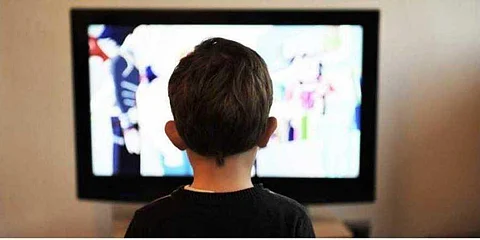

Parting is such sweet sorrow, but it can also be a long-drawn-out drama that scars. The mother who clings to her adult son, the boss who calls you at midnight on Sunday, an abusive spouse you tag ‘soul mate’... letting go is an art.
The ‘when’ of a departure is vital, yet we linger and make lame jokes when we should salute smartly, click our heels and march.
Dragging a tale can be fatal to it. Timing is everything; a correctly executed cut-off is what makes for an effective narrative. Stories must find their full stop.
In the delicate ecosystem of fiction, it is asinine to meander in the last lap. As the Kardashians kiss us goodbye, we can’t even pucker up—they are guests who overstayed.
When they burst onto our TV sets in 2007, we had a ringside seat to their lives. Sisters snarling at each other and squealing on each other, their lips and chins changing shape with every season. But soon we tired of them, were on to the commercial gimmickry at play.
Viewers ordered: off with their heads. They are exiting our screens not a moment too soon. Who will miss them? Not you, not I. Some endings arrive on the sweet spot. Like Fleabag or Sherlock.
Both Phoebe Waller-Bridge and Benedict Cumberbatch gave us their all in those short intense snatches. When they wag a finger saying no more sequels, we sheepishly nod. That ended with us asking for more.
Dolly Kitty Aur Woh Chamakte Sitare was going along just fine—even if overflowing with too many issues—till it hit the wall full speed in the final reel. The religious angle and casual deaths of two minor characters were too random to make sense.
In Alankrita Shrivastava’s previous outing, Lipstick Under My Burkha, it would have been more realistic to hand Buaji (Ratna Pathak Shah) her young swimming-coach lover. The sexual rejection seemed not just brutal but also inauthentic.
To quote a few stray examples, the slightly erotic Chloe had in effect two endings: one organic, one contrived.
The former felt like a natural twist in the tale (Chloe lying), but the latter (Chloe dying) seems directorial self-gratification.
In 22 Female Kottayam, the end was savage and bordered on misandry, but doesn’t miss a beat. The audience was groomed to welcome the concluding violence.
In C U Soon, it adds to the film’s horrific perfection that Jimmy does not actually get to meet Anumol at the airport, and that he may or may not call her.
Keeping it open-ended and real. Knowing when to stop is a careful tango between the audience and the storyteller. Both have to arrive at the end from two opposite directions. The climax—in any context—must satisfy.
Shinie Antony
Author shinieantony@gmail.com